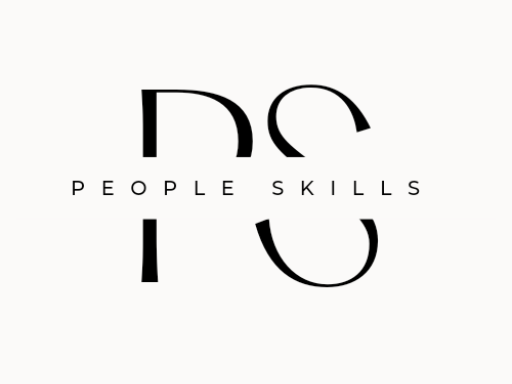Managing a multigenerational workforce can be challenging, but with the right strategies in place, it can also be highly rewarding. As a manager, it is important to understand the different strengths and skills that each generation brings to the table and to create a cohesive team that leverages those strengths. By promoting open communication, embracing diversity, and providing opportunities for professional growth, you can ensure that your multigenerational workforce thrives. Remember, the key is to be flexible and adaptable, and to approach each team member as an individual with unique qualities and perspectives.

Understanding the Generations
In today’s multigenerational workforce, it’s important to have a grasp of the characteristics and values that define each generation. Let’s take a dive into the key generations shaping our workplaces.
Traditionalists (1928 – 1944)
Also known as the “silent” generation. These folks grew up during World War II and have seen it all. Loyal and dedicated, they value monetary rewards and are motivated by the prospect of climbing the corporate ladder. Work is a duty for them, and they bring a sense of duty and strong work ethic to the table.
Baby Boomers (1945 – 1965)
Born in the post-war boom, Baby Boomers are confident, independent, and not afraid to assert their authority. They value work-life balance and prefer a harmonious fusion of personal and professional life. With their experience and determination, they can be excellent mentors to younger generations.
Generation X (1966 – 1980)
The misunderstood middle child, Generation Xers are resourceful and adaptable. They grew up witnessing technological advancements and social changes, which shaped their skepticism and self-reliance. They value work-life balance and seek personal fulfillment in their careers.
Millennials (1981 – 1996)
Often criticized as tech-obsessed and entitled, these individuals are known for their desire to make a difference in the world. They value flexibility, purpose, and the opportunity to learn and grow. They love collaboration and crave constant feedback.
Generation Z (1997 – present)
The digital natives! Generation Z has never known a world without smartphones and social media. They have a unique perspective influenced by technology, resulting in a focus on personal attributes rather than race or ethnicity. They value authenticity, diversity, and inclusion.
Understanding the characteristics and values of each generation is vital to bridging gaps and creating a collaborative environment. Each generation brings a different set of strengths and perspectives to the workplace. By appreciating these differences, we can foster a harmonious and engaged workforce.
Challenges of a Multigenerational Workforce
Why is managing a multigenerational workforce quite a challenge?
First off, we have differing communication styles. Traditionalists prefer face-to-face conversations while Generation Z favors texting and instant messaging. It’s like trying to navigate through a maze of different languages.
On top of that, there are conflicting work values. Baby Boomers value stability and loyalty, while Millennials and Gen Z crave flexibility and work-life balance. It’s like trying to juggle apples and oranges. Good luck with that!
Don’t forget about the generation gap and stereotypes. Each generation has their own set of stereotypes and biases about the others. Baby Boomers think Millennials are lazy and entitled, while Millennials think Baby Boomers are stuck in their old ways. It’s like a never-ending battle of “I’m right, you’re wrong.” But fear not, there is a way to overcome these challenges and create a more harmonious workplace.
The key is to adapt your management style to fit the needs of each generation. Take the time to understand their communication preferences and find a middle ground. It may be a bit of a balancing act, but it’s worth it in the end.
Another important strategy is to promote communication and understanding among your team. Encourage open discussions and create a safe space for everyone to voice their opinions. Break down the barriers and bridge the gap. It’s like building a bridge that connects all the generations together.
And lastly, embrace diversity and inclusion. Recognize the strengths of each individual, regardless of their age. Encourage knowledge sharing and create a culture of learning and growth. When everyone feels valued and respected, magic happens. It’s like mixing all the ingredients of a delicious recipe together.
Managing a multigenerational workforce may have its challenges, but with the right strategies in place, you can create a collaborative environment where all generations can thrive.
Creating a Collaborative Environment
Managing a multigenerational workforce can be quite a challenge. Different generations have distinct values, communication styles, and work preferences. But fear not, dear reader, for there are ways to build a collaborative environment that bridges the generational gap. Are you ready to dive in? Let’s get started!
Adapting Management Styles
First and foremost, as a manager, you need to be adaptable. Remember, you’re not dealing with a one-size-fits-all situation here. Each generation has its own quirks and expectations. So, it’s crucial to tailor your management style to accommodate the various needs of your workforce.
For the Traditionalists, who grew up during World War II, they value loyalty and duty. So, recognizing their long-tenure and providing monetary rewards and opportunities for advancement can go a long way in keeping them engaged. The Baby Boomers, on the other hand, are confident and assertive. They value work-life balance. So, offering flexible work arrangements and opportunities for growth can be key to keeping them motivated. Generation X, known for their independence, prefers a hands-off approach. Empowering them to take ownership of their work and providing autonomy can foster their engagement. Millennials, the tech-savvy bunch, crave feedback and recognition. Regular check-ins and a transparent communication style can help them thrive. Lastly, Generation Z, the digital natives, value diversity and inclusion. Creating an environment where their voices are heard and ideas are valued will keep them motivated.
Promoting Communication and Understanding
Now that you’ve adapted your management style, it’s time to promote open communication and understanding among your multigenerational team. Encourage your employees to share their preferences and thoughts openly. Be a good listener and provide a safe space for discussions. Foster an environment where everyone feels heard and understood, regardless of their age. After all, communication is the glue that holds teams together and promotes collaboration.
Embracing Diversity and Inclusion
Embracing diversity and inclusion is not just a trendy buzzword; it’s a fundamental aspect of managing a multigenerational workforce. Don’t be afraid to celebrate the differences and unique perspectives that each generation brings to the table. Create an inclusive work culture where everyone feels valued and accepted, regardless of their age or background. By embracing diversity, you create a harmonious environment where creativity and innovation can flourish. Remember, managing a multigenerational workforce is no easy feat. It takes a combination of adaptability, open communication, and an inclusive mindset. With these strategies in your arsenal, you can create a collaborative environment where every generation thrives.
Finding Common Ground
Recognizing Individual Strengths, Encouraging Knowledge Sharing, and Building Strong Company Values are key to bridging the generational divide and creating a collaborative environment in your multigenerational workforce.
First and foremost, it’s important to recognize and appreciate the unique strengths and skills that each generation brings to the table. Baby Boomers may have years of experience and wisdom, while Gen Z is tech-savvy and innovative. By acknowledging and valuing these individual strengths, you can foster a sense of mutual respect and create a space where everyone feels heard and valued. To encourage knowledge sharing, provide opportunities for mentoring and cross-generational collaboration. Baby Boomers can impart their expertise to younger generations, while younger employees can offer fresh perspectives and new ideas. This not only benefits the business by sharing knowledge and fostering innovation but also creates a sense of unity and camaraderie among your team members. Building strong company values is another crucial aspect of creating a collaborative environment. Clearly defined and shared values provide a common ground for all generations to rally behind. Millennials and Gen Z employees, in particular, are attracted to companies with a strong mission and purpose. By aligning your values with the diverse needs and aspirations of different generations, you can create a cohesive team that is motivated and inspired to work towards a shared vision. So, in managing a multigenerational workforce, don’t underestimate the power of recognizing individual strengths, encouraging knowledge sharing, and building strong company values. Embrace the diversity and unique perspectives that each generation brings, and watch as your team comes together, driven by a sense of unity and common purpose – all while creating a fun and engaging work environment that defies generational stereotypes.
Implementing Strategies
To foster collaboration and harmony among your multigenerational workforce, it’s crucial to implement effective strategies. One key approach is to create hybrid work environments that cater to each generation’s preferences. Gen Z and Traditionalists can enjoy the structure of an office environment, while Boomers, Gen X, and Millennials can maintain a healthy work-life balance. Another strategy is to organize team-building activities that can break down the generational barriers. Not only do these activities allow employees to blow off some steam, but they also promote bond-building and creative problem-solving. It’s an excellent opportunity for different generations to come together and learn from each other’s strengths and experiences. Additionally, adopting flexible communication channels is vital to ensure effective communication across generations. Different generations may have varying preferences when it comes to communication methods. By providing options like in-person, email, and messaging platforms, you can accommodate everyone’s needs and foster better understanding and collaboration. By implementing these strategies, you can create a more inclusive and collaborative work environment, where each generation feels valued and can contribute their unique perspectives. Remember, the ultimate goal is to bridge the gap and build a strong, cohesive team that drives success for your organization. So, get creative and embrace the power of generational diversity!
Conclusion
Managing a multigenerational workforce is no walk in the park. With each generation having its own unique values and viewpoints, finding common ground can be quite the challenge. But fear not, with the right strategies in place, you can bridge the generational divide and build a more collaborative environment. First and foremost, it’s important to adapt your management style to cater to the needs of each generation. The traditionalists, baby boomers, Generation X, millennials, and Generation Z all have different communication styles and work values. So, take the time to understand these differences and tailor your approach accordingly. Promoting communication and understanding is also key. Encourage open dialogue among your team members and create a safe space for them to express their preferences and concerns. This will help foster a sense of inclusion and build trust among the different generations. In addition, embracing diversity and inclusion is crucial. Recognize and celebrate the strengths and contributions of each generation. Encourage knowledge sharing and mentorship programs that allow for the transfer of expertise from one generation to another. Implementing strategies like hybrid work environments, team-building activities, and flexible communication channels can further strengthen the bond among your multigenerational team. By finding ways to accommodate the preferences of each generation, you can create a harmonious work environment where everyone feels valued. In conclusion, managing a multigenerational workforce may have its challenges, but with the right approach, it can also be incredibly rewarding. By adapting your management style, promoting communication and understanding, embracing diversity and inclusion, and implementing effective strategies, you can bridge the generational divide and build a collaborative and engaged workforce. So, embrace the differences, find common ground, and reap the benefits of a multigenerational team. Who said managing a diverse workforce can’t be fun?
